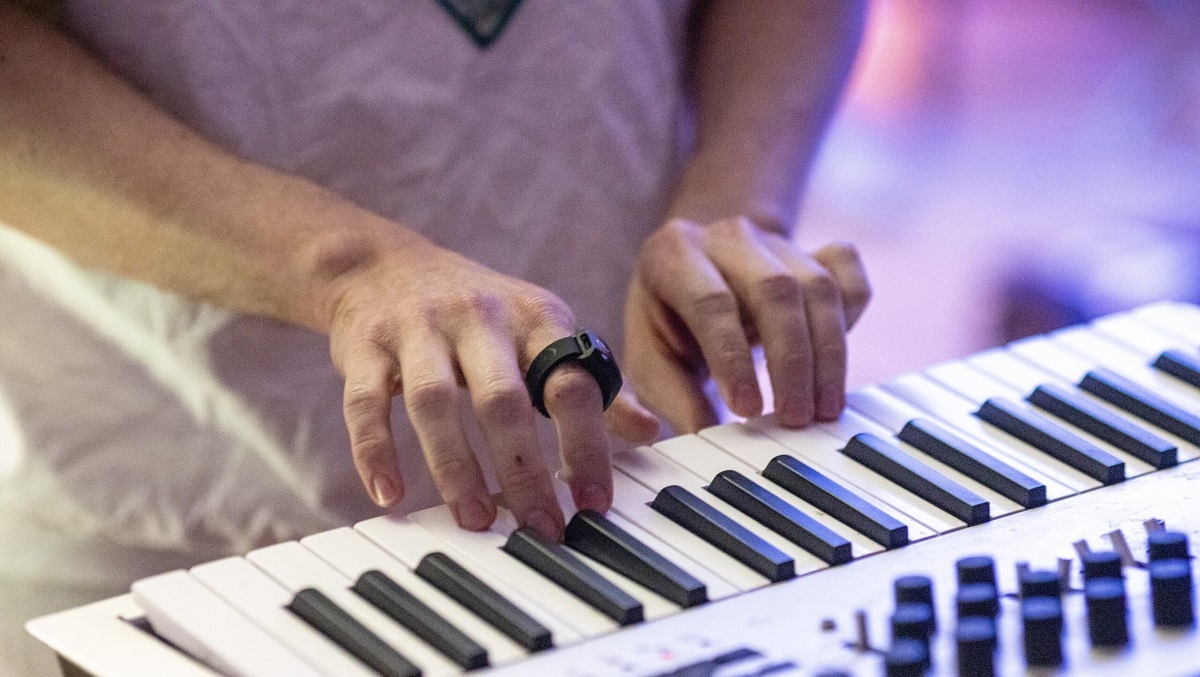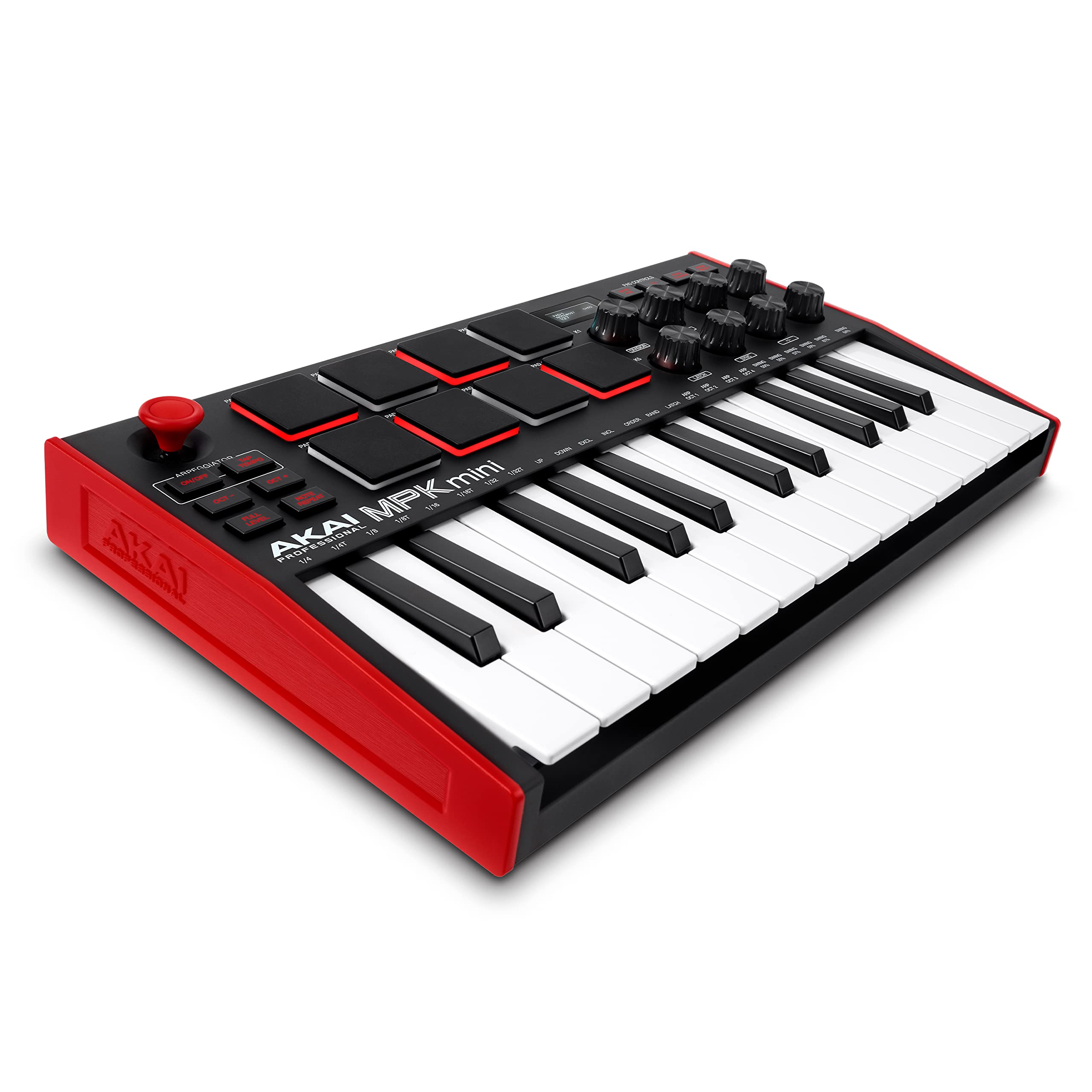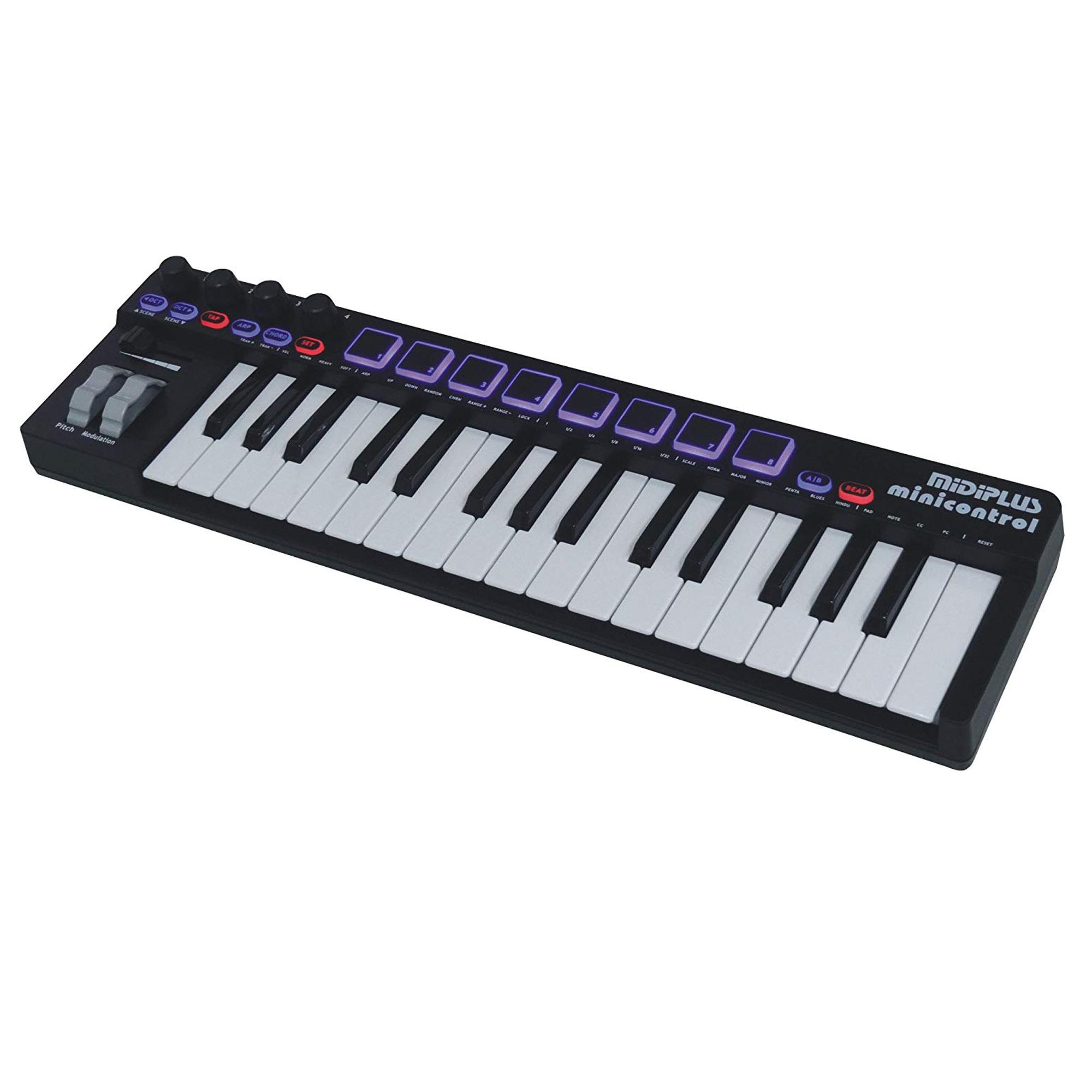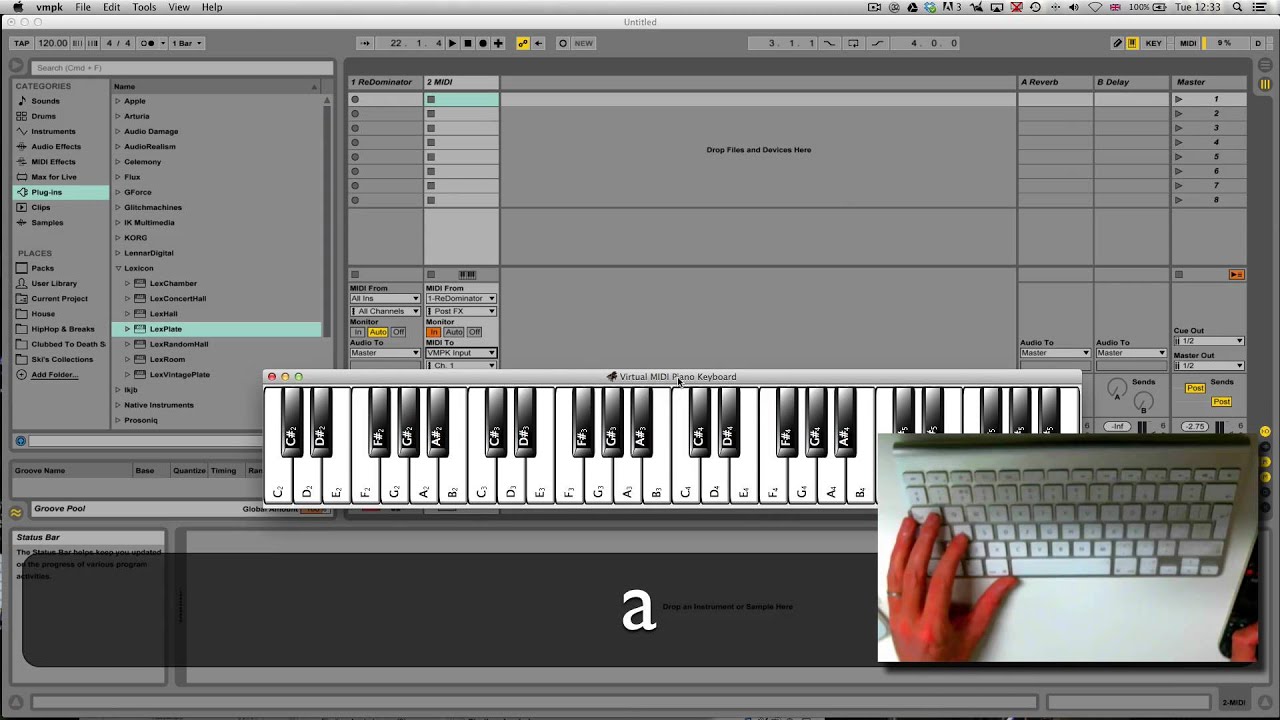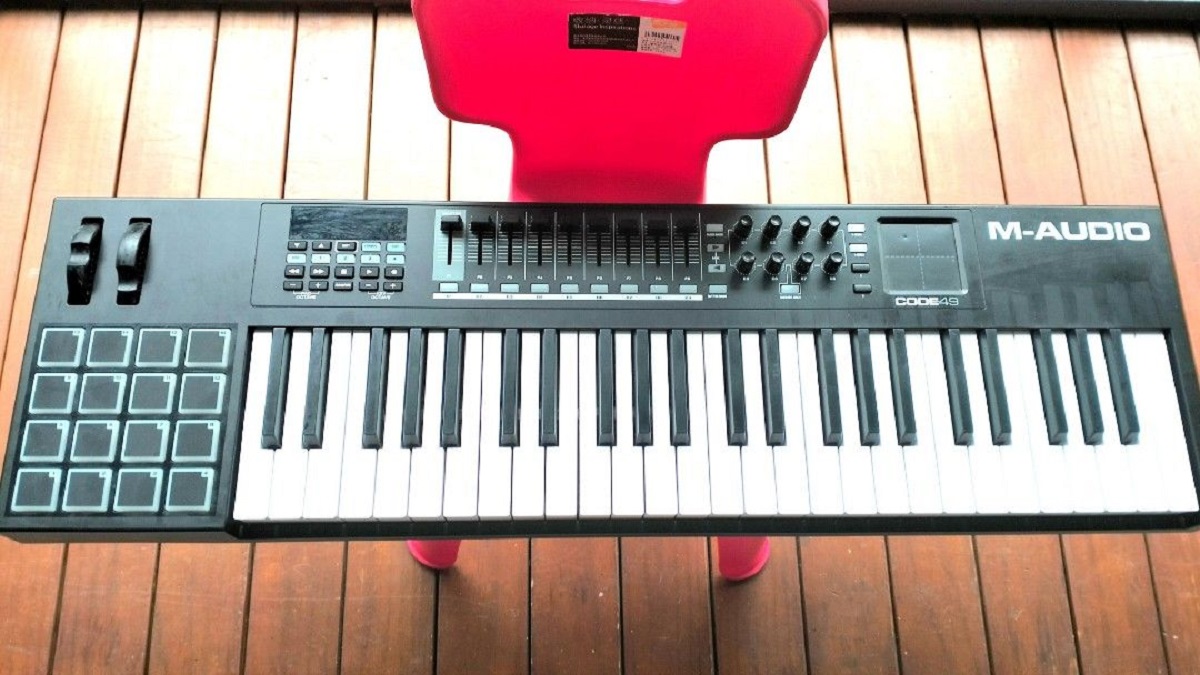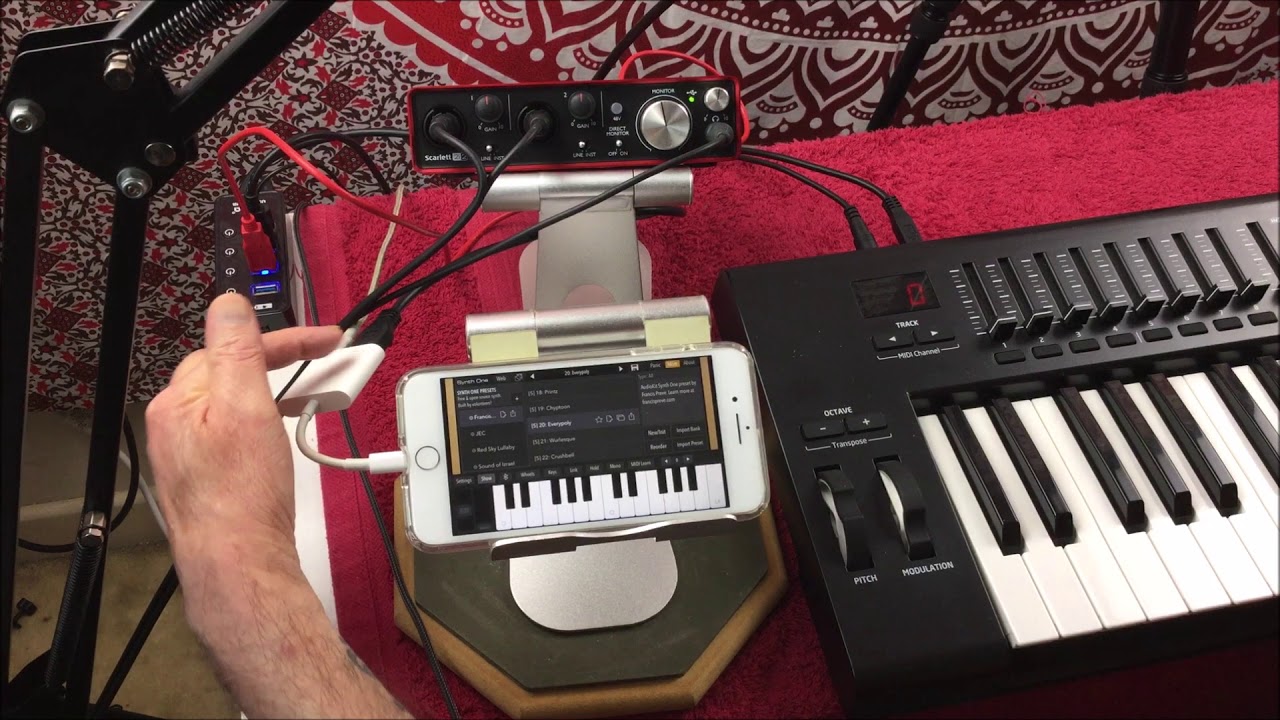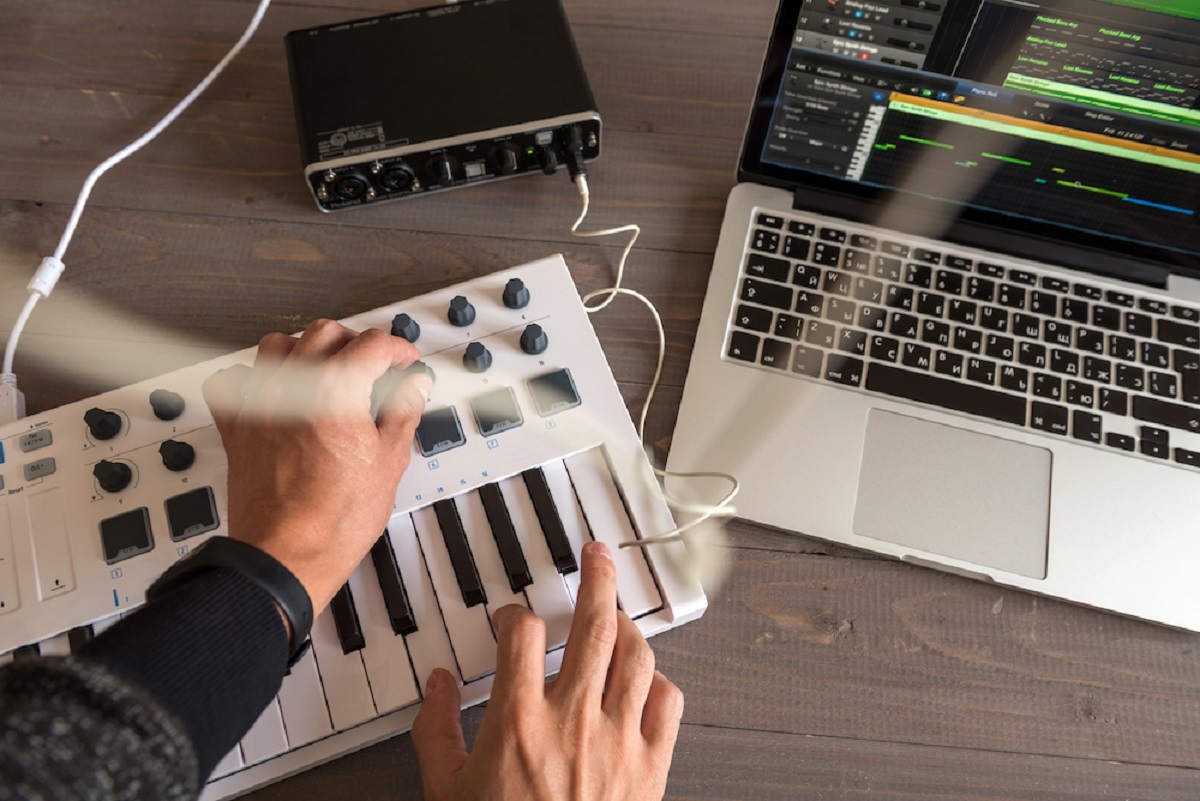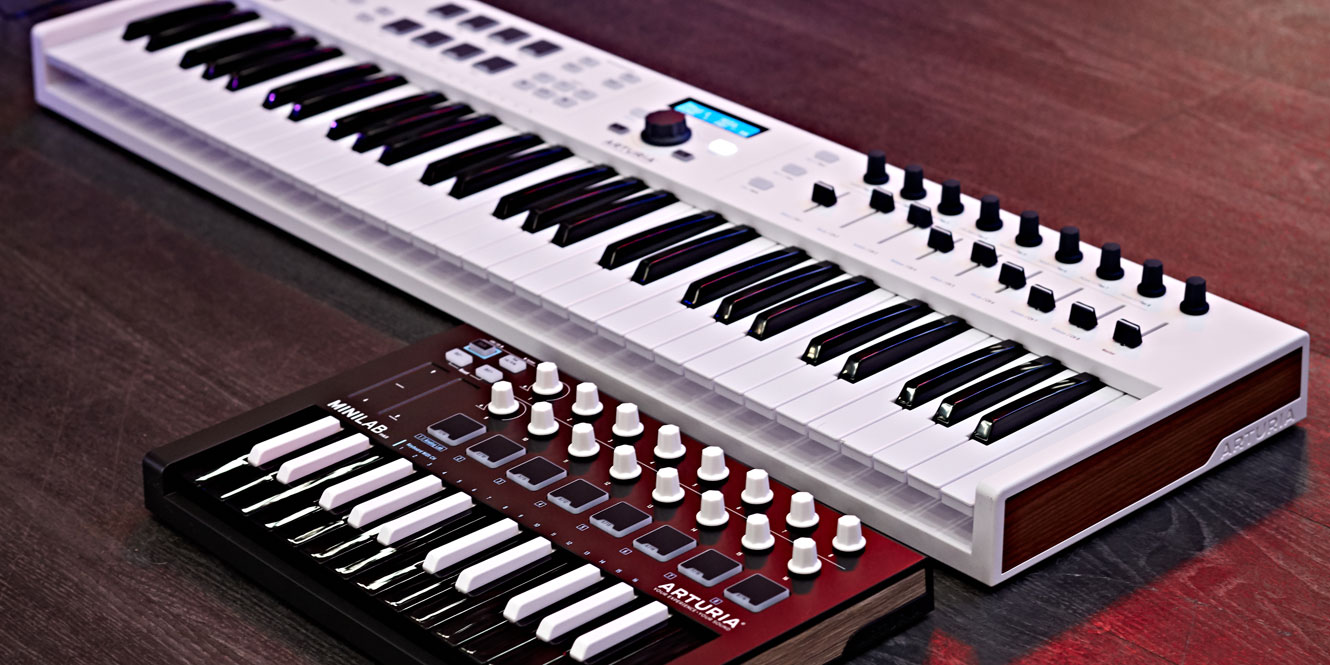Introduction
Welcome to the world of music production and performance! Whether you're a seasoned musician, an aspiring producer, or simply someone with a passion for creating music, the MIDI keyboard is a versatile and essential tool that can elevate your musical endeavors to new heights. In this article, we'll delve into the multifaceted realm of MIDI keyboards, exploring their functionality, features, and the myriad benefits they offer to musicians and producers alike.
A MIDI keyboard, also known as a MIDI controller, is a fundamental component of modern music production and performance setups. It serves as a bridge between the digital and analog domains, enabling users to interact with a wide array of software instruments, digital audio workstations (DAWs), and other music production tools. Whether you're composing intricate melodies, laying down captivating chord progressions, or triggering dynamic sound effects, a MIDI keyboard empowers you to express your musical creativity with unparalleled flexibility and precision.
As we embark on this exploration of MIDI keyboards, we'll uncover the inner workings of these innovative devices, shedding light on the technology that underpins their functionality. We'll also delve into the diverse features that MIDI keyboards offer, from velocity-sensitive keys and assignable knobs to pad controllers and comprehensive integration with music production software. Moreover, we'll highlight the numerous advantages of incorporating a MIDI keyboard into your musical toolkit, showcasing how it can streamline your workflow, enhance your performances, and unlock a world of sonic possibilities.
Whether you're a live performer seeking to infuse your stage presence with electronic elements, a producer aiming to craft intricate soundscapes and arrangements, or a songwriter looking to capture your musical ideas with precision and finesse, the MIDI keyboard stands as an indispensable ally in your creative journey. By the end of this article, you'll have gained valuable insights into the role of MIDI keyboards in modern music production and performance, equipping you with the knowledge to make informed decisions when selecting the perfect MIDI keyboard for your unique musical needs. Let's embark on this illuminating exploration of the MIDI keyboard and discover the boundless creativity it can unleash.
Let's dive into the enchanting realm of MIDI keyboards and unlock their potential for elevating your musical pursuits.
What is a MIDI Keyboard?
A MIDI keyboard is a versatile electronic instrument that allows musicians, producers, and composers to control and manipulate digital music software and hardware. Unlike traditional keyboards, MIDI keyboards do not generate sound on their own. Instead, they transmit MIDI (Musical Instrument Digital Interface) data to external devices such as computers, synthesizers, and sound modules, enabling users to trigger and manipulate a wide range of sounds and effects.
At its core, a MIDI keyboard comprises a set of keys, similar to those found on a piano, and is equipped with various additional controls, such as knobs, sliders, and pads, which can be assigned to different parameters within music production software. These controls provide users with a tactile interface for shaping and modulating sound, making the MIDI keyboard an invaluable tool for expressive performance and intricate sound design.
One of the defining characteristics of a MIDI keyboard is its ability to transmit MIDI data, which includes information about note pitch, duration, velocity, and modulation. This data is sent to a connected device, allowing it to produce sound based on the user’s input. Additionally, MIDI keyboards often feature velocity-sensitive keys, meaning that the force with which a key is struck can affect the volume and timbre of the generated sound, adding nuance and dynamics to the performance.
It’s important to note that MIDI keyboards come in various sizes and configurations, ranging from compact, portable models with a limited number of keys to full-sized, feature-rich controllers with a wide array of performance and production capabilities. Some MIDI keyboards also include drum pads, which enable users to trigger percussion sounds and samples, further expanding the creative possibilities offered by these instruments.
As a cornerstone of modern music production and performance, MIDI keyboards have become essential tools for musicians and producers across diverse genres and styles. Their ability to seamlessly integrate with software instruments, DAWs, and virtual studio technology (VST) plugins empowers users to craft intricate compositions, perform live with electronic versatility, and explore new sonic frontiers with unparalleled creativity.
Now that we’ve established the fundamental nature of MIDI keyboards, let’s delve deeper into the mechanisms that drive their functionality and the myriad ways in which they can enhance the musical experience.
How Does a MIDI Keyboard Work?
Understanding how a MIDI keyboard operates is essential for harnessing its full potential in music production and performance. At its core, a MIDI keyboard functions as a controller that communicates with external devices, such as computers, synthesizers, and samplers, using the MIDI protocol. This communication occurs through a physical connection, typically via USB, MIDI cables, or wireless technology, allowing the MIDI keyboard to transmit a wide range of musical data to its connected devices.
When a key is pressed on a MIDI keyboard, a series of events is set into motion. The keyboard’s sensors detect the key press and transmit data, including the specific note being played, the velocity of the keystroke, and any additional modulation or expression applied by the user. This information is encoded as MIDI data and sent to the connected device, which interprets the data and produces the corresponding sound based on the received input.
Velocity sensitivity, a hallmark feature of MIDI keyboards, enables users to infuse their performances with dynamics and expression. When a key is struck with greater force, the MIDI keyboard captures this intensity and transmits it as part of the MIDI data, allowing the connected device to respond with a louder and more resonant sound. This nuanced control over volume and timbre adds a human touch to the music, mimicking the dynamics of acoustic instruments and enhancing the overall realism of the performance.
Beyond key presses, MIDI keyboards often incorporate additional controls, such as knobs, sliders, and pads, which can be assigned to various parameters within music production software. These assignable controls empower users to manipulate sound in real time, adjusting parameters such as filter cutoff, resonance, modulation depth, and more, directly from the MIDI keyboard’s interface. This hands-on approach to sound shaping and modulation fosters a deeper connection between the musician and the music, allowing for spontaneous creativity and sonic exploration.
Furthermore, MIDI keyboards can transmit not only note data but also control messages, enabling users to modulate parameters such as pitch bend, modulation wheel assignments, and sustain pedal inputs. This level of control extends the expressive capabilities of the MIDI keyboard, enabling musicians to imbue their performances with a rich palette of articulations and effects.
By serving as a conduit for musical expression and control, MIDI keyboards empower users to interact with digital music technology in a tactile and intuitive manner, bridging the gap between traditional instrumental performance and the boundless possibilities of electronic sound manipulation.
As we unravel the inner workings of MIDI keyboards, we gain a deeper appreciation for their role in shaping the creative landscape of modern music production and performance. Now, let’s explore the diverse features that make MIDI keyboards indispensable tools for musicians and producers.
Features of a MIDI Keyboard
MIDI keyboards are equipped with a diverse array of features that cater to the nuanced needs of musicians, producers, and performers. These features not only enhance the functionality of the MIDI keyboard but also serve as creative tools for shaping and modulating sound. Let’s explore some of the key features that define the modern MIDI keyboard and contribute to its versatility and expressive potential.
- Velocity-Sensitive Keys: One of the foundational features of MIDI keyboards is velocity sensitivity, which enables the keys to respond to the force of the user’s keystrokes. This feature allows for dynamic and expressive performances, where the intensity of the key presses directly influences the volume and timbre of the produced sound.
- Assignable Controls: MIDI keyboards often include a range of assignable controls, such as knobs, sliders, and buttons, which can be mapped to various parameters within music production software. This flexibility empowers users to manipulate sound, modulate effects, and control virtual instruments in real time, adding a tactile and interactive dimension to music creation.
- Drum Pads: Many MIDI keyboards feature integrated drum pads, offering a convenient way to trigger percussion sounds and samples. These pads are responsive and velocity-sensitive, allowing users to create rhythmic patterns and drum sequences with precision and fluidity.
- Integration with DAWs: MIDI keyboards are designed to seamlessly integrate with digital audio workstations (DAWs), providing direct control over recording, editing, and mixing functions. This integration streamlines the music production workflow, allowing for intuitive manipulation of tracks and parameters within the DAW environment.
- Transport Controls: To facilitate seamless navigation and control of music software, MIDI keyboards often include transport controls for functions such as play, stop, record, and loop. These dedicated controls enhance the efficiency of music production and performance, enabling users to focus on their creative process without being encumbered by software interfaces.
- Expression Pedals: Some MIDI keyboards support the connection of expression pedals, which expand the range of expressive possibilities by allowing for real-time control of parameters such as volume, modulation, and pitch bend. This feature adds a level of nuance and subtlety to performances, akin to the expressive capabilities of acoustic instruments.
These features collectively contribute to the versatility and adaptability of MIDI keyboards, empowering musicians and producers to craft immersive soundscapes, perform with expressive precision, and engage with music production software in a dynamic and intuitive manner. The combination of tactile controls, responsive keys, and seamless integration with software environments makes the MIDI keyboard an indispensable tool for realizing creative visions and elevating musical experiences.
As we continue our exploration of MIDI keyboards, we’ll uncover the myriad benefits that these features offer to users, highlighting the transformative impact that MIDI keyboards can have on music production and performance.
Benefits of Using a MIDI Keyboard
Utilizing a MIDI keyboard in music production and performance environments offers a wealth of benefits that significantly enhance the creative process and the overall musical experience. From expressive performance capabilities to streamlined workflow integration, MIDI keyboards empower musicians and producers in diverse ways. Let’s explore the multifaceted advantages of incorporating a MIDI keyboard into your musical toolkit.
- Expressive Performance: MIDI keyboards enable musicians to infuse their performances with dynamics, articulations, and nuances that closely mimic the expressiveness of acoustic instruments. Velocity-sensitive keys and assignable controls allow for real-time manipulation of sound, fostering a deeper connection between the performer and the music.
- Efficient Music Production: By seamlessly integrating with digital audio workstations (DAWs) and music production software, MIDI keyboards streamline the process of composing, arranging, and producing music. The tactile interface and assignable controls provide intuitive access to a wide range of functions, enhancing the efficiency and creativity of music production workflows.
- Sound Design and Manipulation: MIDI keyboards serve as powerful tools for shaping and modulating sound, offering hands-on control over parameters such as filter cutoff, resonance, modulation depth, and more. This direct interaction with sound elements facilitates spontaneous experimentation and fosters a deeper understanding of sonic manipulation.
- Live Performance Versatility: For live performers, MIDI keyboards open up a world of versatility and sonic exploration. From triggering samples and backing tracks to controlling virtual instruments and effects, MIDI keyboards empower performers to craft engaging and dynamic live experiences that seamlessly blend electronic and acoustic elements.
- Creative Inspiration: The tactile nature of MIDI keyboards and their responsive controls often sparks creative inspiration, allowing musicians and producers to explore new musical ideas and experiment with unconventional sounds and textures. This creative stimulation can lead to the discovery of unique musical expressions and innovative compositions.
- Customizable Workflows: With the ability to assign controls to specific parameters within music production software, MIDI keyboards offer customizable workflows that cater to individual preferences and creative approaches. This adaptability allows users to tailor their setups to align with their unique production and performance requirements.
These benefits collectively underscore the transformative impact of MIDI keyboards on music creation, performance, and production. Whether used in studio environments, live performances, or creative experimentation, MIDI keyboards stand as indispensable tools that empower users to realize their musical visions with precision, depth, and boundless creativity.
As we delve further into the realm of MIDI keyboards, we’ll explore the considerations and factors involved in selecting the right MIDI keyboard to suit your specific musical needs and aspirations.
Choosing the Right MIDI Keyboard for You
When embarking on the journey of selecting a MIDI keyboard, it’s essential to consider a range of factors that align with your musical preferences, production requirements, and performance aspirations. The diverse landscape of MIDI keyboards offers a multitude of options, each tailored to different creative workflows and stylistic approaches. By evaluating the following considerations, you can make an informed decision and choose a MIDI keyboard that resonates with your unique musical vision.
- Key Count and Size: The number of keys on a MIDI keyboard, as well as their size, significantly impacts playability and portability. Full-sized keyboards with 88 keys offer the range and feel of a traditional piano, while compact models with 25 or 49 keys prioritize portability and space efficiency. Consider your performance and compositional needs when selecting the appropriate key count and size.
- Performance Controls: Assess the type and number of performance controls offered by the MIDI keyboard, including assignable knobs, sliders, drum pads, and modulation wheels. These controls enhance expressiveness and real-time manipulation, so choose a keyboard that aligns with your preferred methods of interaction and sound modulation.
- Integration with Software: Ensure that the MIDI keyboard seamlessly integrates with your preferred digital audio workstation (DAW) and music production software. Compatibility and native support for specific software environments can streamline your workflow and enhance the overall production experience.
- Expression and Sensitivity: Evaluate the keyboard’s sensitivity to velocity and aftertouch, as well as its support for expression pedals. These features contribute to the nuanced expressiveness of your performances and enable dynamic control over sound parameters.
- Portability and Connectivity: Consider the portability and connectivity options of the MIDI keyboard, including USB, MIDI, and wireless connectivity. A portable and versatile keyboard that suits your performance needs can adapt to various live and studio setups.
- Additional Features: Explore additional features such as aftertouch, polyphonic aftertouch, and advanced control capabilities that align with your specific musical requirements. These features can expand your creative possibilities and facilitate innovative approaches to music production and performance.
By carefully evaluating these considerations and aligning them with your musical objectives and creative workflow, you can select a MIDI keyboard that serves as an extension of your artistic expression and empowers you to realize your musical aspirations with precision and authenticity.
As we navigate the diverse landscape of MIDI keyboards, it’s important to recognize that each individual’s musical journey is unique, and the right MIDI keyboard is one that resonates with your creative vision and enhances your musical experiences in profound and meaningful ways.
Conclusion
As we conclude our exploration of MIDI keyboards, we’ve uncovered the transformative impact that these versatile instruments have on the landscape of modern music production and performance. From their expressive capabilities and seamless integration with music production software to their role in shaping creative workflows and inspiring innovative sonic explorations, MIDI keyboards stand as indispensable tools for musicians, producers, and performers across diverse genres and styles.
At the heart of the MIDI keyboard’s allure lies its ability to bridge the gap between traditional instrumental performance and the boundless possibilities of electronic sound manipulation. With velocity-sensitive keys, assignable controls, and intuitive integration with digital audio workstations, MIDI keyboards empower users to craft immersive soundscapes, perform with expressive precision, and engage with music production software in a dynamic and intuitive manner.
Furthermore, the diverse range of MIDI keyboards available in the market offers musicians and producers the flexibility to choose instruments that align with their unique musical preferences, production requirements, and performance aspirations. Whether seeking a portable controller for on-the-go music creation or a full-sized, feature-rich keyboard for studio-based compositions, the array of options ensures that every individual can find a MIDI keyboard that resonates with their creative vision.
Aspiring musicians, seasoned producers, and live performers alike can harness the power of MIDI keyboards to unlock new realms of creativity, efficiency, and expressive potential. The tactile nature of MIDI keyboards, coupled with their responsive controls and seamless integration with music software, fosters an environment where musical ideas can flourish, performances can resonate with emotion, and sonic landscapes can be sculpted with precision and finesse.
Ultimately, the journey of selecting the right MIDI keyboard is a deeply personal and creative endeavor, guided by considerations that align with individual musical aspirations and production workflows. By carefully evaluating key factors such as key count, performance controls, integration with software, and portability, musicians and producers can embark on a path that leads to the perfect MIDI keyboard, one that becomes an extension of their artistic expression and a catalyst for musical innovation.
As we embrace the boundless potential of MIDI keyboards and their impact on the ever-evolving landscape of music creation, production, and performance, it becomes evident that these instruments are not just tools, but companions in the artistic journey, empowering us to realize our musical visions with precision, depth, and boundless creativity.







